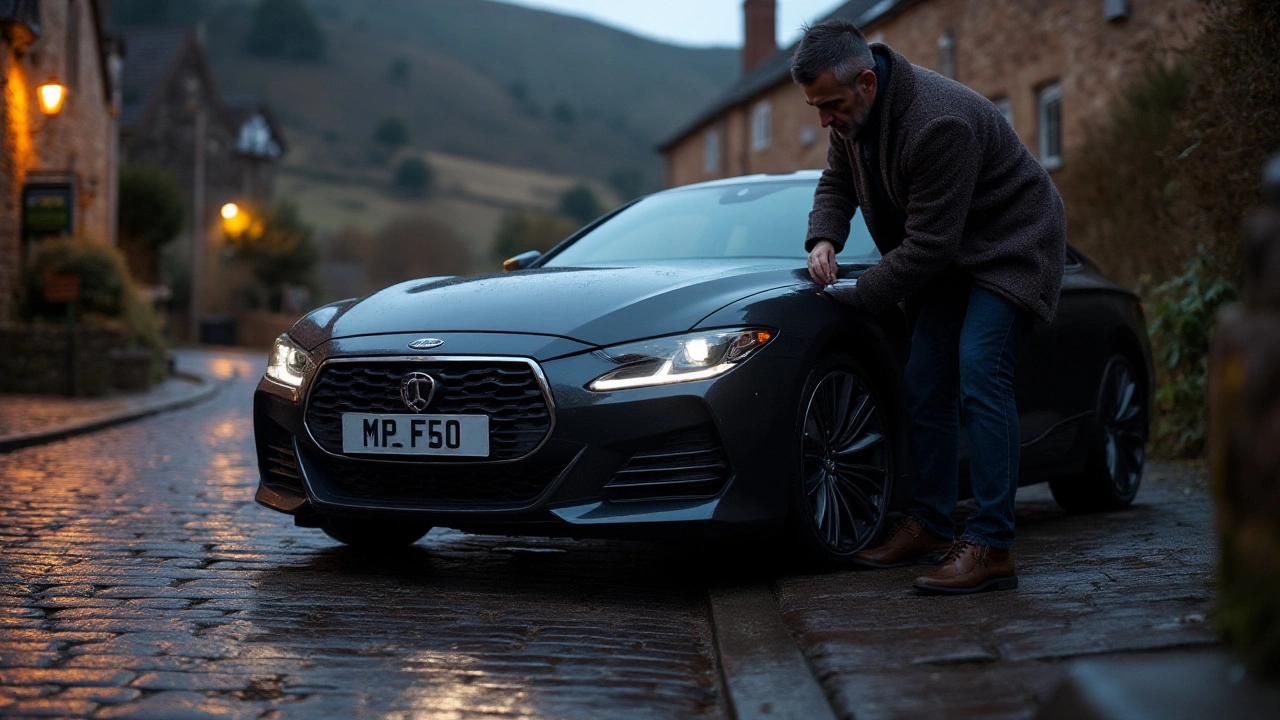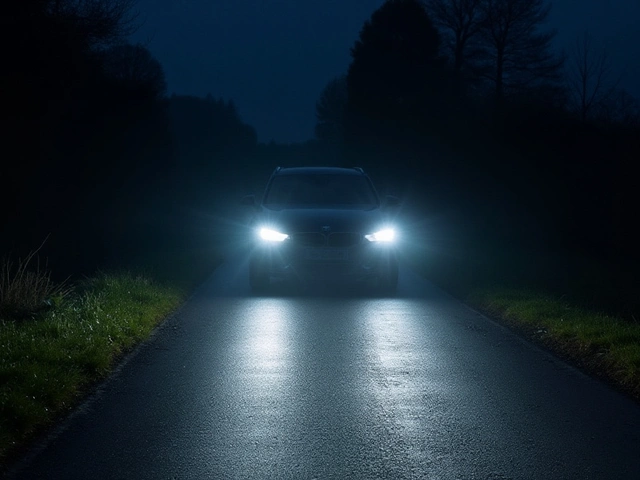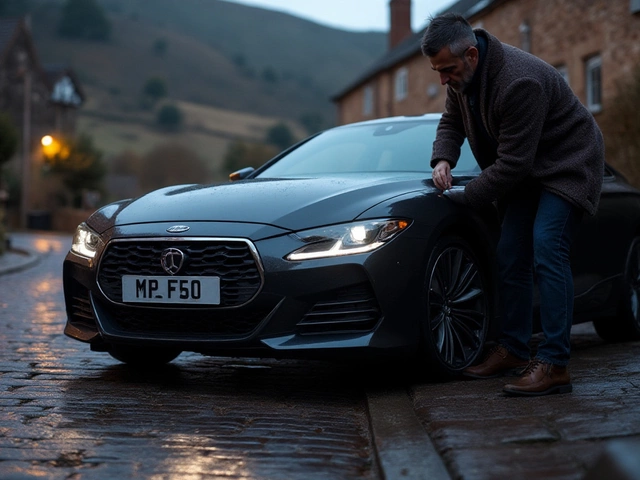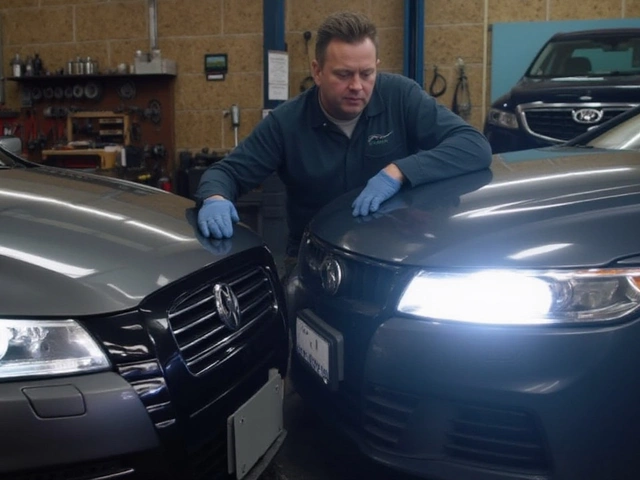For many drivers, LED headlights are more than just a modern feature; they're essential for safety and performance on the roads. But there’s often a common quest—making these headlights even brighter.
Whether you’re navigating dark backroads or simply desiring that extra edge in visibility on your evening commute, understanding how you can boost the effectiveness of your LED headlights can make a world of difference.
We'll delve into a range of straightforward yet impactful strategies to enhance the brightness of your LED headlights, offering practical advice and addressing some popular myths. Let's illuminate the path to brighter, safer driving experiences.
- Understanding LED Headlight Basics
- Importance of Proper Headlight Alignment
- Upgrading to Higher Lumens Bulbs
- Cleaning and Maintenance Tips
- Legal Considerations
- Common Misconceptions
Understanding LED Headlight Basics
LED headlights have revolutionized the automotive lighting industry, offering energy efficiency and long-lasting performance that traditional halogen lamps simply cannot match. At their core, LEDs, or Light Emitting Diodes, produce light through the movement of electrons in a semiconductor material. This might sound like a mouthful, but it's a far more efficient process than the heating of a filament seen in older bulbs. The result is a light output that's more directional, meaning it illuminates the road both sharply and broadly. For car enthusiasts and everyday drivers alike, this translates to a brighter and safer nighttime driving experience. Additionally, LEDs require substantially less power, effectively extending the vehicle's fuel efficiency. Given their lower energy demands, these lights also generate less heat, reducing wear on the vehicle's electrical system over time. No wonder they've quickly become a must-have for modern vehicles.
When it comes to the structure of LED headlights, they are composed of multiple individual LED emitters. Each emitter is designed to project light in specific patterns. Unlike halogen bulbs that use a reflector bowl to scatter their light, LEDs offer a more precise beam. This precision aids in reducing glare for oncoming drivers while ensuring maximum illumination of the road ahead. But not all LED headlights are created equal. Variations exist depending upon the quality of the diode and the design of the headlight assembly itself. The color temperature of these lights, often expressed in Kelvin (K), directly affects visibility. Most car manufacturers set LEDs in the 5000K to 6000K range, mimicking daylight and offering the best contrast during night driving. As drivers, understanding this detailed interplay of components ensures informed decisions when upgrading or maintaining your vehicle’s lighting system.
"The primary advantages of LED headlights are not merely limited to energy efficiency but extend to durability and versatility," states a report from the National Highway Traffic Safety Administration.
It's essential to recognize that aside from technological advantages, LED headlights contribute to strong vehicle performance across diverse environments. Especially for those driving in challenging weather conditions, LED headlights maintain consistent brightness and effectiveness, even in subzero temperatures. They are also incredibly durable; unlike traditional bulbs that are prone to breakage, LEDs can withstand vibrations and impacts, making them ideal for off-road enthusiasts or urban adventurers alike. As a bonus, many LED headlights come with adaptive features, which automatically adjust the beam based on incoming traffic—a marvel of modern engineering that prioritizes safety. While some vehicle owners may be daunted by the higher initial investment, the longevity and decreased maintenance requirements of LED headlights often make them a cost-effective choice in the long run. Given these multifaceted benefits, understanding the basic but pivotal elements of LED technology empowers owners to embrace this luminary leap into the future.
Importance of Proper Headlight Alignment
When it comes to getting the most out of your LED headlights, alignment plays a critical role, often more than many drivers realize. It's not just about avoiding blinding oncoming traffic or ensuring your beams don't light up the treetops but truly maximizing the effectiveness and reach of your brighter lights. Misaligned headlights can reduce visibility considerably, making it challenging to see road signs, potential hazards, and lane lines. For vehicles featuring car lighting systems that are newer or recently converted, professional alignment not only improves safety but also optimizes performance.
The mechanics of headlight alignment might seem straightforward, but it’s a precision job that ensures both balance and spread are perfectly calibrated. Aligning headlights properly alters the angle at which your lights meet the road; this alteration is particularly crucial for those who have upgraded to high-performance bulbs. A poor alignment might cause dim areas and hotspots, undermining the very reason for upgrading your headlights in the first place. A survey by the National Highway Traffic Safety Administration found nearly 20% of headlight-related visibility issues were due to improper alignment, highlighting how frequently this oversight occurs.
“A meticulously aligned headlight isn't just about better visibility; it’s an imperative part of vehicle safety maintenance,” explains Dr. Morgan Ashford, automotive technology researcher at the Institute of Road Safety.According to Dr. Ashford, knowing that a simple adjustment can enhance the headlight enhancement process is a powerful peace of mind. You don't need a professional to always check their alignment; you can use a simple garage door test to ensure they're not too high or low. But ensure to observe regulation marks on the alignment wall if you opt to DIY. Also, not all vehicles have an easy manual adjust option, so refer to the vehicle's manual for specific instructions.
If you're someone who frequently carries heavy loads or travels through different terrains, regular checks and adjustments become even more pertinent. Any weight at the back can tilt your vehicle, putting your headlights out of focus. Most modern vehicles are designed with automatic headlight leveling systems; nevertheless, engaging in these checks proactively ensures all scenarios are accounted for. For those with older vehicles that might not have these features, adding or upgrading to an adjustable system can be a worthy investment for your vehicle's lighting capabilities. By understanding and addressing the critical nature of headlight alignment, you take a substantial step towards ensuring that your nighttime driving is as safe and efficient as possible.
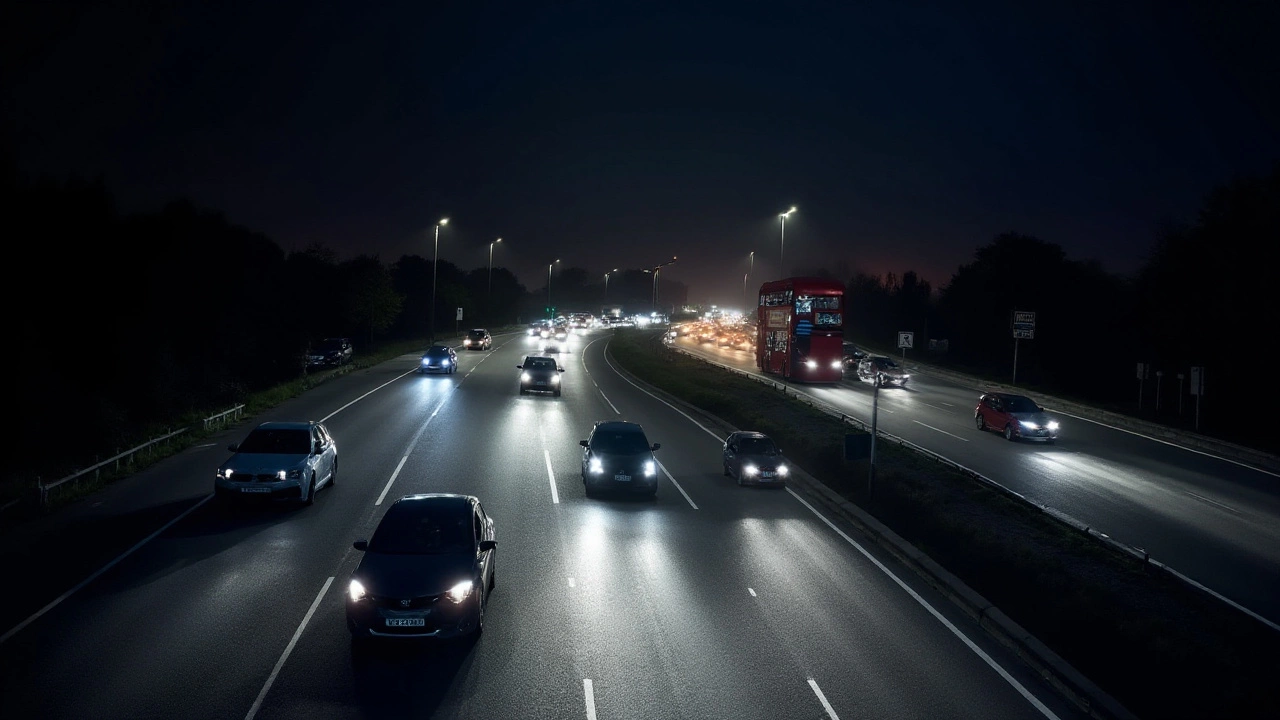
Upgrading to Higher Lumens Bulbs
When it comes to making your LED headlights brighter, one of the most effective methods is upgrading to bulbs with higher lumens. Lumens measure the total amount of visible light emitted by a source, so the higher the lumens, the brighter the light. Transitioning from standard bulbs to those with elevated lumens can vastly improve visibility and enhance your driving experience, particularly during nighttime drives or in challenging weather conditions.
Not all LED bulbs are created equal. You'll find a variety of options in the market, each boasting different brightness levels. The key is to select a bulb that complements your vehicle's design while staying within safety and legal boundaries. Some premium bulbs offer as much as 10,000 lumens, significantly brighter than the average stock bulb. However, it's important to balance lifespan and brightness; higher lumens can sometimes mean a reduction in longevity if not properly designed.
When deciding on a bulb, consider the color temperature, which is measured in Kelvin (K). A bulb with a higher Kelvin rating will emit a whiter, more daylight-like light. Generally, a color temperature of around 6000K-6500K is ideal for automotive headlights, providing a crisp, clear light that allows better identification of road hazards.
While upgrading bulbs sounds straightforward, there are key considerations before diving in. Ensure your vehicle's housing can handle the increased brightness without causing glare to other drivers. An improperly aligned bright bulb can be a source of danger rather than safety. Checking your existing headlight housing for heat tolerance and ventilation is also crucial, as higher lumens bulbs can generate more heat.
A study by the Insurance Institute for Highway Safety found that brighter headlights can reduce night crash risk by up to 20%. This statistic alone motivates many drivers to make the switch. Upgrading doesn’t just benefit you; it contributes to the overall safety of everyone sharing the road. For this reason, the investment in higher lumens headlights is often regarded as both a personal and public safety enhancement.
According to John Bulbsman, an expert at BrightTech, "Choosing the right lumens balance is crucial. Too bright can be as problematic as too dim. It's about enhancing visibility while maintaining responsibility on the roads."
Installation of new bulbs is typically manageable for anyone with basic automotive knowledge. Yet, if you're unsure, seeking professional assistance is advisable to ensure optimal performance and compliance with local regulations.
In conclusion, upgrading to bulbs with higher lumens is undoubtedly a beneficial step for those looking to brighten their driving path. Whether for safety, aesthetics, or performance, making the right choice by researching and consulting knowledgeable sources will ensure your upgrade is both effective and lawful.
Cleaning and Maintenance Tips
Maintaining the brightness of your LED headlights isn’t just about choosing the right bulbs; it’s also about consistent cleaning and maintenance practices. Over time, dirt, grime, and environmental elements can accumulate on the headlight lenses, reducing their effectiveness. To help keep your LED headlights shining as bright as possible, develop a regular cleaning schedule. First, make sure to clean headlights using a soft, damp cloth to avoid scratching the surface. Avoid harsh chemicals which could damage the protective layer of the lenses and, consequently, impact the light output.
Apart from cleaning, polishing your headlights can significantly enhance the clarity and brightness of your car lighting. A widely recommended method is to use a specific headlight restoration kit that includes a polish. This will help remove the oxidation that often causes a yellowish tint. Regular polishing not only improves brightness but also prolongs the lifespan of the headlights, making them a worthwhile investment for any vehicle owner concerned with nighttime visibility.
Humidity can cause unwanted condensation inside the headlight housing, affecting the brightness and color of the light beam. Addressing this problem involves ensuring that the seals around the headlights are intact and not worn out. In some cases, a small amount of moisture accumulates due to a minute crack or improper sealing. If you notice fogging or water droplets inside the headlight lens, you can also place silica gel packs in the housing area as a temporary moisture absorber. However, seeking professional help to check and seal any cracks will provide long-term solutions.
One practical tip is to regularly check the alignment of your LED headlights. Misaligned headlights can cause suboptimal lighting conditions, which may lead to reduced visibility and safety risks. Most modern cars come with built-in alignment settings that can be adjusted according to the driver's needs. If you're unsure about adjusting them yourself, a professional mechanic can easily align them for you.
"Regular maintenance of headlights is crucial not only for optimal illumination but also for road safety," says Thomas Jackson, an automotive lighting specialist at Auto Illuminations Incorporated.
A proactive approach to maintaining your headlights can prevent future problems. It all comes down to consistency and quality of care. Remember that taking these small steps can make a huge difference in the performance of your vehicle's lighting system, providing safe driving conditions regardless of the time of day or weather conditions.
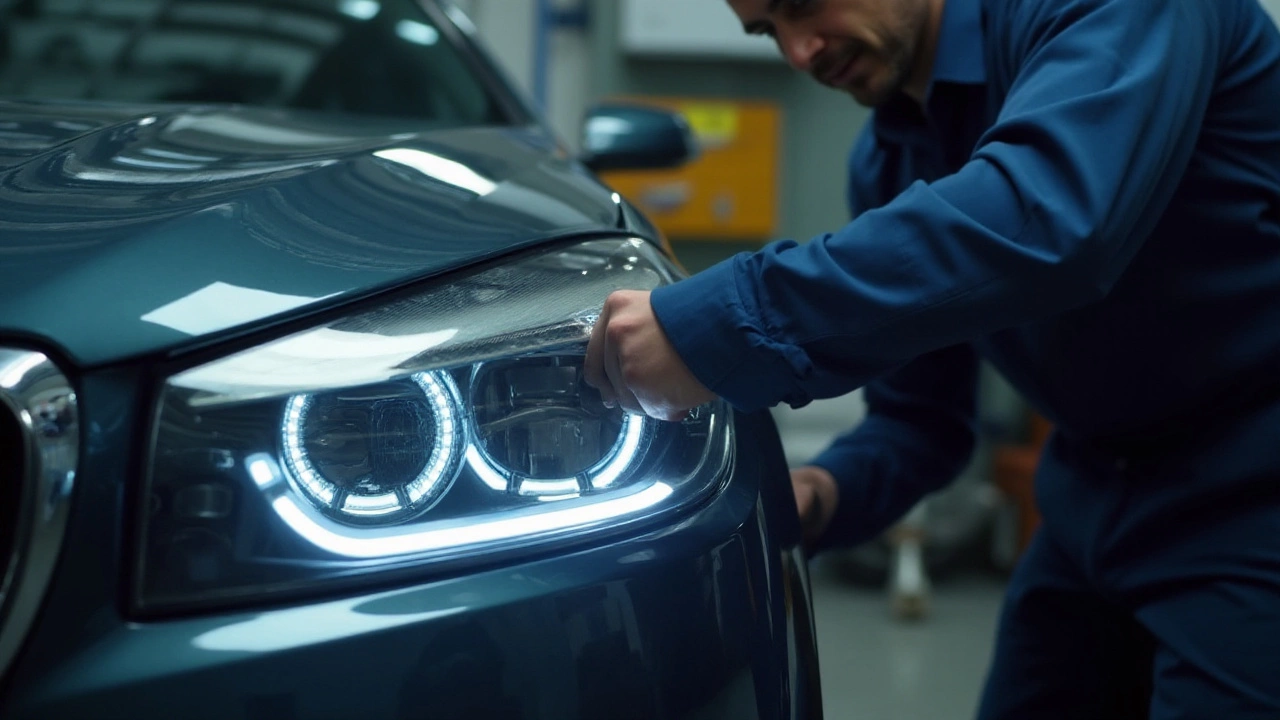
Legal Considerations
When you're exploring how to make your LED headlights brighter, it's crucial to familiarize yourself with the legal guidelines that come into play. In many regions, there are specific laws governing vehicle lighting that are in place to ensure safety for all road users. These laws typically dictate the maximum brightness allowed, the color of the lights, and even how they should be aimed to prevent causing glare to oncoming traffic. While it might be tempting to crank up the brightness for better visibility, it's important to strike a balance between improved performance and legal compliance. Ignoring these laws can lead to fines, failed inspections, or even more serious legal consequences.
Different countries and states have varying regulations when it comes to headlight brightness and modifications. For instance, in the United States, the Department of Transportation (DOT) has established standards that specify not only the luminous intensity that headlights should have but also the height and angle at which they must be installed. These regulations are carefully designed to minimize the chances of causing visual discomfort to other drivers, something that high-intensity lights can easily lead to if not correctly fitted. Likewise, in Europe, the UNECE/WP.29 regulation ensures a uniform set of guidelines that vehicle manufacturers and consumers should adhere to when modifying or installing car lighting.
Consider an illuminating perspective from the National Highway Traffic Safety Administration (NHTSA) which states,
"The key purpose of headlamp regulations is to enhance night driving safety without imposing undue inconvenience or risk to other road users."This clearly underscores the need to maintain a judicious balance between brighter lights and road safety. In modifying your brighter lights, an essential part of the process is compliance with current legal mandates to avoid the unintended consequence of reducing overall road safety.
An intelligent approach to ensuring adherence to these legal considerations involves communication with certified automotive professionals. Regular inspections and consultations with experts can provide insight into whether your lighting modifications stay within legal boundaries. Meanwhile, manufacturers often provide a wealth of detail regarding legal constraints applicable to aftermarket parts. This should be a first-stop resource for understanding what you're legally permitted to do when altering your lighting.
Lastly, it's beneficial to stay informed about updates or changes to lighting standards, as legal requirements can and do evolve. Given the steady pace of technological advancement in vehicle lighting, new rules and updates happen periodically. Whether through online resources, vehicular organization memberships, or even directly from your vehicle's dealer, keeping abreast of these changes ensures your compliance and helps steer clear from any potential legal snag.
Common Misconceptions
There's a lot of buzz around how to make your LED headlights shine brighter, and with so much information floating around, it's easy to get tangled in myths rather than facts. One common belief is that simply purchasing the most expensive bulb guarantees better brightness. While it's true that quality often comes with a price tag, it's not solely about the purchase; it's about compatibility and correct usage. Understanding the lumens, which quantify brightness, and ensuring they fit within your vehicle's design is crucial. Expensive doesn't always mean brighter, especially if the headlights are not mounted correctly or the vehicle's electrical system isn't compatible.
Another widespread myth is that a brighter light automatically extends your range of visibility. In reality, headlights work by providing a balance between width and range of light produced. Some individuals think that increasing the wattage of the LEDs will achieve this effect, which can actually result in overheating or damaging the headlight housing. Moreover, this might cause glare for oncoming traffic, which not only hampers safety but also could lead to breaches in legal requirements.
Some drivers misinterpret the role of color temperature, believing that a whiter or even bluish tint of light equates to enhanced brightness. What they might not realize is that while higher color temperatures produce a more vibrant light, they don't necessarily improve visibility in foggy conditions. Moreover, car lighting experts warn that these color changes can be more strenuous on the eyes over time. An anecdote from a seasoned auto mechanic sheds light on this. He mentions,
"I've seen many folks come in with ultra-white LEDs hoping for better clarity. They don't understand that it's not a guarantee for safer driving, but rather about how the human eye perceives contrast."
Swapping LED headlights with any model without considering the vehicle's specific requirements tends to be another common pitfall. Contrary to the popular belief that all headlights are generally universal, car manufacturers tune their models for particular types of bulbs to optimize light spread and intensity. Using incompatible LED bulbs might circumvent manufacturer settings, leading to uneven light distribution and possible legal complications. Navigating these misconceptions can help drivers not only save money but also increase safety while ensuring compliance with road regulations. It's about finding balance, knowledge, and practicality in the search for brighter headlights.

